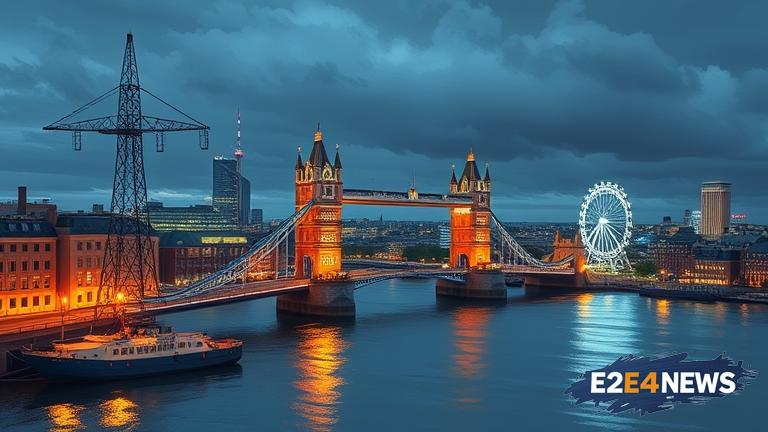The United Kingdom has been working tirelessly to ensure a stable and secure energy supply for its citizens. Recent studies have shown that Greater London, being one of the most populous regions in the country, has a low risk of energy blackouts. This is due to the fact that the UK has a diverse energy mix, which includes a combination of fossil fuels, nuclear power, and renewable energy sources. The National Grid, which is responsible for managing the UK’s energy supply, has implemented various measures to prevent blackouts and ensure a reliable energy supply. These measures include the use of smart grids, energy storage systems, and demand response programs. Additionally, the UK government has set ambitious targets to increase the use of renewable energy sources, such as wind and solar power, which will help to reduce the country’s reliance on fossil fuels and lower its carbon emissions. The UK’s energy security is also enhanced by its membership in the European Union’s internal energy market, which allows for the free flow of energy across borders. However, despite these efforts, there are still some challenges that the UK faces in terms of energy security. For example, the country’s aging energy infrastructure and the increasing demand for energy during peak hours can put a strain on the grid. Furthermore, the UK’s dependence on imported energy sources, such as natural gas, can make it vulnerable to price volatility and supply disruptions. To address these challenges, the UK government has launched various initiatives, such as the Smart Grid Forum and the Energy Storage Alliance, which aim to promote the development and deployment of new energy technologies. The private sector is also playing a crucial role in enhancing the UK’s energy security, with companies such as National Grid and Scottish and Southern Energy investing heavily in new energy infrastructure and technologies. In terms of Greater London specifically, the region’s low risk of energy blackouts is due to its proximity to major energy generation facilities, such as the Sizewell nuclear power station and the Thames Estuary wind farm. The region is also home to a number of major energy companies, including BP and Shell, which have a significant presence in the area. Moreover, Greater London’s energy demand is relatively stable, with a strong focus on commercial and industrial activities, which tend to have a more predictable energy demand profile compared to residential areas. However, it is worth noting that the UK’s energy landscape is constantly evolving, and new challenges and opportunities are emerging all the time. For example, the growth of electric vehicles and the increasing use of renewable energy sources are creating new demands on the grid, while the development of new energy storage technologies is providing new opportunities for energy management and optimization. In conclusion, the UK’s energy security is a complex and multifaceted issue, and Greater London’s low risk of energy blackouts is just one aspect of a much broader picture. While there are still challenges to be addressed, the UK’s diverse energy mix, robust energy infrastructure, and commitment to renewable energy and energy efficiency make it well-placed to meet its energy needs and ensure a secure and reliable energy supply for its citizens. The UK government and private sector are working together to promote energy security and reduce the risk of blackouts, and Greater London is likely to remain a low-risk area for energy blackouts in the future. The region’s strong economy and high standard of living are also contributing factors to its low risk of energy blackouts, as they enable the region to invest in new energy technologies and infrastructure. Furthermore, the UK’s energy policy is designed to promote energy security and reduce the risk of blackouts, and Greater London is likely to benefit from these policies in the future. Overall, the UK’s energy security is a critical issue, and Greater London’s low risk of energy blackouts is a positive development that reflects the country’s commitment to energy security and sustainability.
